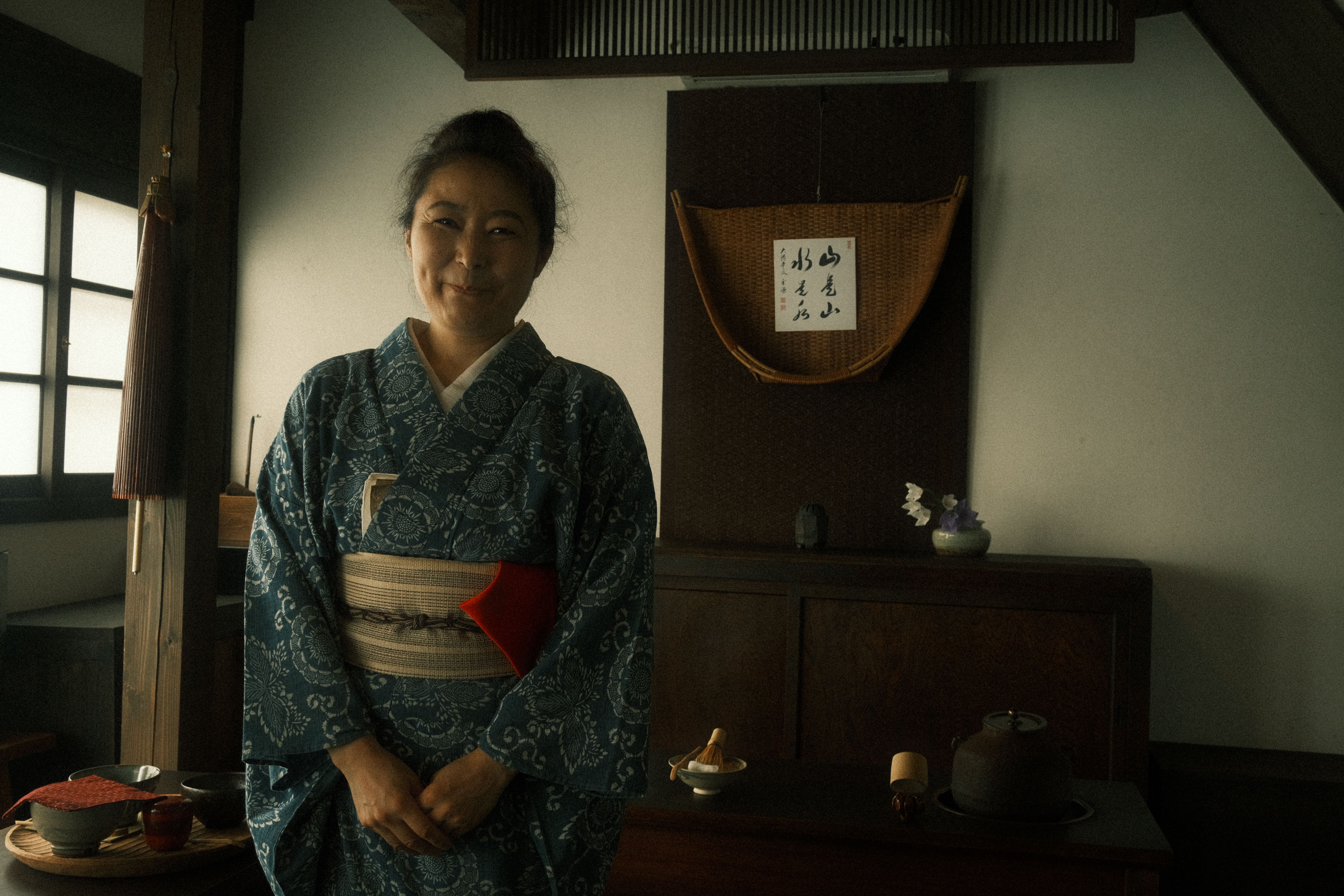
The People Carrying the Knowledge of Japanese Craft

- Written byKiara Corso
- Published date 01 August 2023

Kiara Corso, Post-Grad Ambassador and MA Global Collaborative Design Practice (Camberwell) student, is currently in Japan as part of her course's collaboration with the Kyoto Institute of Technology. Here she reports back on a trip with the course to visit the craftspeople of Yame.
I visited Yame in Fukuoka Prefecture in Southern Japan to learn about the traditional crafts of Japan. Una Laboratories led us on an incredible, knowledgeable two days where we met and spoke to local craftspeople of the region.

Welcome to Yame, a small town in the South of Japan famous for its Yame tea. Upon our arrival into the Yame region, the contrast between the busy city we departed from and this remote town was striking. The air was still and our voices travelled alone through the green landscape.


We arrived at the Craft Inn Te, hosted by Una Laboratory, a craft travel company working to share the traditional crafts of the Kyushu region with others. We stayed in their beautiful Bamboo room which was entirely made of locally made materials and products.
We began our day with a Geshi breakfast which celebrates Japan’s 24 micro-seasons. Each element of the meal is selected with intent utilising locally grown produce to nourish and energise our body for the day ahead.


Our first stop was a traditional teahouse where we met Asuka-san a Tea Master in Yame who holds tea ceremonies that encompass the foundations of Japanese culture; harmony, purity, and tranquility.

We enjoyed the elements of the tea ceremony which included traditional sweets Namagashi (生菓子) and a personalised matcha set to make our own tea.

We trekked into the Yame mountains and met Baba-san, a local Incense Maker who uses a water mill to pound cedar trees and create natural incense sticks to be used in homes and temples.

Baba-san ventures through the mountains to forage for fallen cedar trees which he can turn into incense powder. He explains his connection to land and respect for his environment as it provides for him daily.

Returning to the town, we were greeted by Ryo-san a ceramist who trained under a local ceramic master and is now experimenting with glazing and form.

Ryo-san collects his own clay from the land and describes how this connects him to his environment and work on a deeper level. By being so a part of the entire making process, Ryo feels a sense of responsibility in the pieces he makes.

A few doors down we meet Mr Shinji a local Bucket Maker who creates watertight, perfectly aligned buckets made from cedar wood and bamboo.

Each bucket takes many weeks to make as each piece of wood is perfectly cut to connect together and form a smooth round shape. This process requires precision, patience and a deep understanding the material.
These craftspeople who generously opened their studios and workshops to us embodied their craft with such beauty. These crafts were not just a mode of income but a lifestyle, every element of their daily lives was influenced by their processes and in turn meant they became a part of the craft and a part of the land they worked on. The experience was in a way very magical, to be able to converse with knowledge keepers who may be the last of their time felt very special. The connection to the environment was so important for each craftsperson, showcasing what it truly means to be sustainable in this overheating world.






Related links
Post-Grad Stories
A thriving online magazine of our postgraduate student voices sharing thought-provoking experiences, practices, thoughts and articles about what matters to them.
Download the PDF Guide to writing articles for Post-Grad Stories
Want to write an article? Get in touch with the Post-Grad Community team PGCommunity@arts.ac.uk
UAL Post-Grad Community
Established in 2013, Post-Grad Community is an inclusive platform for all UAL postgraduate students to share work, find opportunities and connect with other creatives within the UAL and beyond. Find out more